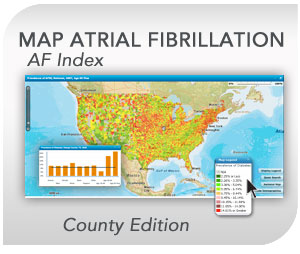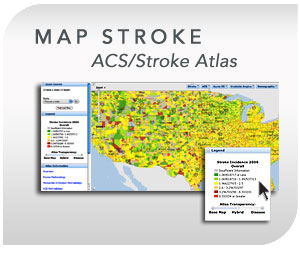Stroke Reports
Monday, May 12th, 2014

STR: May 1, 2014 The aim of this updated guideline is to provide comprehensive and timely evidence-based recommendations on the prevention of future stroke among survivors of ischemic stroke or transient ischemic attack. The guideline is addressed to all clinicians who manage secondary prevention for these patients. Evidence-based recommendations are provided for control of risk factors, […]
Stroke Reports
Monday, May 12th, 2014

STROKEAHA: May 1, 2014 Background and Purpose—Previous studies have shown heterogeneous results on predictors and rates of stroke recurrence. This study set out to investigate the long-term risk and predictors of recurrent stroke in Northern Sweden 1995 to 2008. Methods—In the population-based Monitoring Trends and Determinants of Cardiovascular Disease (MONICA) stroke incidence registry, stroke survivors of […]
Stroke Reports
Monday, May 12th, 2014

J Am Heart Assoc: April 25, 2014 Background In 2011, the Brain Attack Coalition proposed door‐to‐treatment times of 2 hours as a benchmark for patients undergoing intra‐arterial therapy (IAT). We designed the Rapid Reperfusion Registry to capture the percentage of stroke patients who meet the target and its impact on outcomes. Methods and Results This is a retrospective […]
Stroke Reports
Monday, May 12th, 2014

STROKEAHA: April 3, 2014 Background and Purpose—Severe atherosclerosis in the aortic arch is associated with a high risk of recurrent vascular events, but the optimal antithrombotic strategy is unclear. Methods—This prospective randomized controlled, open-labeled trial, with blinded end point evaluation (PROBE design) tested superiority of aspirin 75 to 150 mg/d plus clopidogrel 75 mg/d (A+C) over […]
Stroke Reports
Monday, May 12th, 2014

Am J Clin Nutr: May 2014 Background: Whether elevated intakes of trans fatty acids (TFAs) increase the risk of stroke remains unclear. Except for the Women’s Health Initiative–Observational Study, most studies that directly assessed the association between TFA intake and stroke yielded null results. Objective: The aim of this study was to investigate the association between TFA intake and stroke […]
Stroke Reports
Monday, May 5th, 2014

STROKEAHA: April 8, 2014 Background and Purpose—The benefits of intravenous tissue-type plasminogen activator in acute ischemic stroke are time dependent, and several strategies have been reported to be associated with more rapid door-to-needle (DTN) times. However, the extent to which hospitals are using these strategies and their association with DTN times have not been well studied. […]
Stroke Reports
Monday, May 5th, 2014

CIRCOUTCOMES: April 8, 2014, Background—Computed tomographic (CT) scans are central diagnostic tests for ischemic stroke. Their inefficient use is a negative quality measure tracked by the Centers for Medicare and Medicaid Services. Methods and Results—We performed a retrospective analysis of Medicare fee-for-service claims data for adults admitted for ischemic stroke from 2008 to 2009, with 1-year […]
Stroke Reports
Monday, May 5th, 2014

The Lancet Neurology: April 2, 2014 Introduction Uric acid is an antioxidant with neuroprotective effects in experimental models of stroke. We assessed whether uric acid therapy would improve functional outcomes at 90 days in patients with acute ischaemic stroke. Methods URICO-ICTUS was a randomised, double-blind, placebo-controlled, phase 2b/3 trial that recruited patients with acute ischaemic stroke […]
Stroke Reports
Monday, May 5th, 2014

The Lancet Neurology: February 28, 2014 Background It is often assumed that blood pressure increases acutely after major stroke, resulting in so-called post-stroke hypertension. In view of evidence that the risks and benefits of blood pressure-lowering treatment in acute stroke might differ between patients with major ischaemic stroke and those with primary intracerebral haemorrhage, we compared […]



































